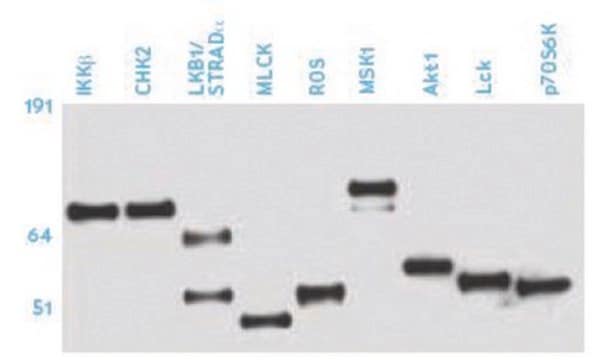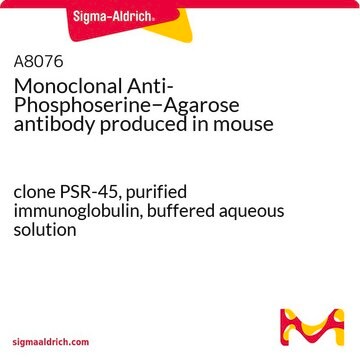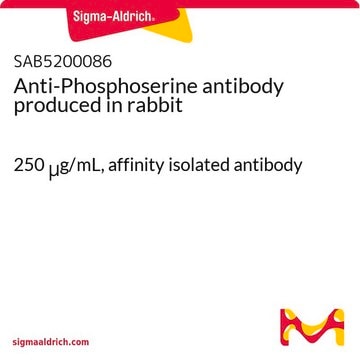P3555
Monoclonal Anti-Phosphothreonine antibody produced in mouse
clone PTR-8, ascites fluid
Sinónimos:
Monoclonal Anti-Phosphothreonine, Phospho Thr, Phospho Threonine, Phospho−Thr, Phospho-Threonine, p-Thr
About This Item
Productos recomendados
origen biológico
mouse
conjugado
unconjugated
forma del anticuerpo
ascites fluid
tipo de anticuerpo
primary antibodies
clon
PTR-8, monoclonal
contiene
15 mM sodium azide
técnicas
indirect ELISA: 1:4,000
western blot: 1:50
isotipo
IgG2b
Condiciones de envío
dry ice
temp. de almacenamiento
−20°C
modificación del objetivo postraduccional
unmodified
¿Está buscando productos similares? Visita Guía de comparación de productos
Categorías relacionadas
Descripción general
Inmunógeno
Aplicación
Mouse monoclonal clone PTR-8 anti-phosphothreonine antibody may be used for the localization of phosphorylated threonine using various immunochemical assays such as ELISA, dot blot, and immunoblotting. Due to steric hindrance of the recognition site, this antibody may not recognize certain proteins known to contain phosphorylated threonine.
Acciones bioquímicas o fisiológicas
Cláusula de descargo de responsabilidad
Not finding the right product?
Try our Herramienta de selección de productos.
Producto relacionado
Código de clase de almacenamiento
10 - Combustible liquids
Clase de riesgo para el agua (WGK)
WGK 3
Punto de inflamabilidad (°F)
Not applicable
Punto de inflamabilidad (°C)
Not applicable
Certificados de análisis (COA)
Busque Certificados de análisis (COA) introduciendo el número de lote del producto. Los números de lote se encuentran en la etiqueta del producto después de las palabras «Lot» o «Batch»
¿Ya tiene este producto?
Encuentre la documentación para los productos que ha comprado recientemente en la Biblioteca de documentos.
Los clientes también vieron
Nuestro equipo de científicos tiene experiencia en todas las áreas de investigación: Ciencias de la vida, Ciencia de los materiales, Síntesis química, Cromatografía, Analítica y muchas otras.
Póngase en contacto con el Servicio técnico









